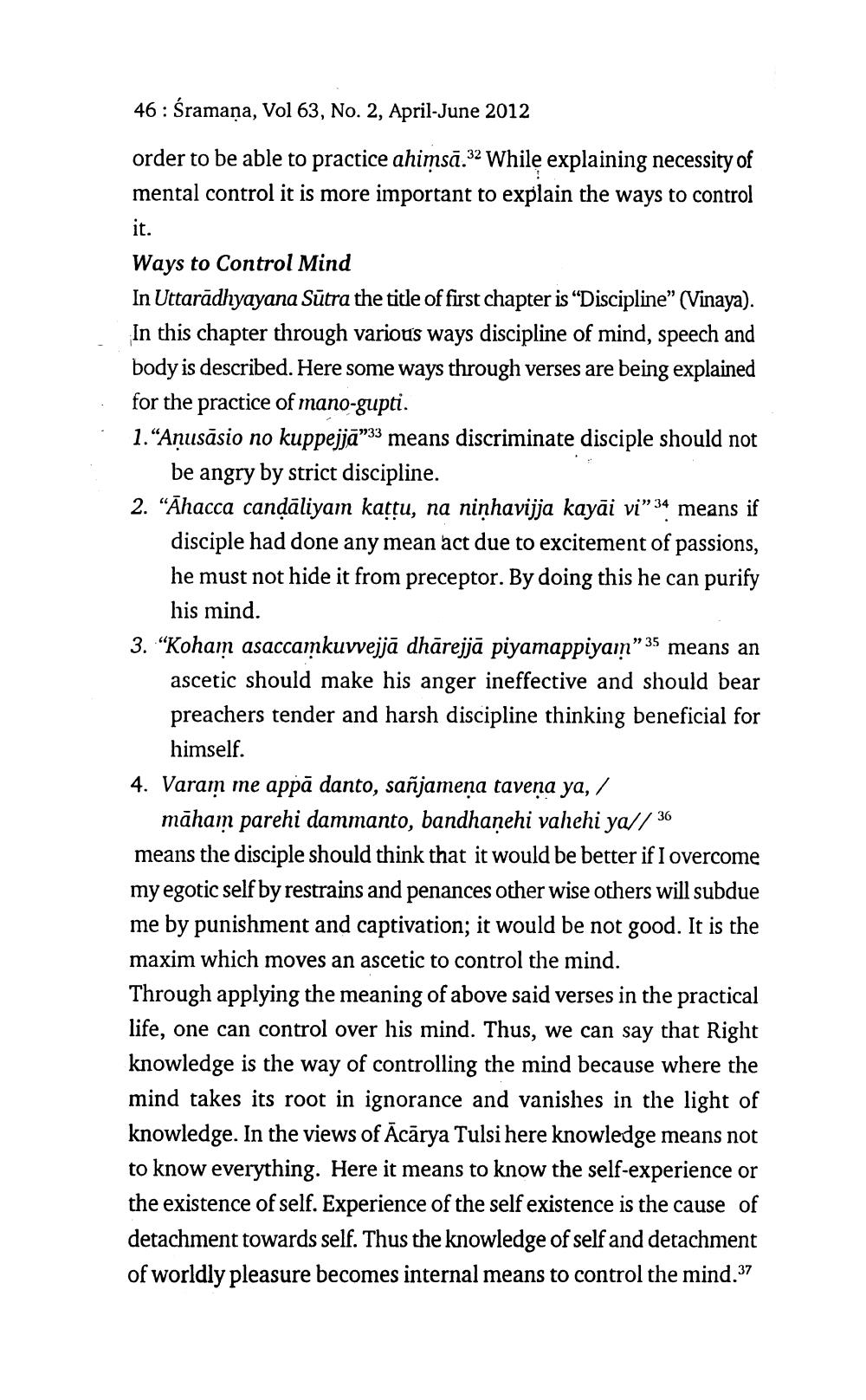________________
46: Śramaņa, Vol 63, No. 2, April-June 2012 order to be able to practice ahimsā.32 While explaining necessity of mental control it is more important to explain the ways to control it. Ways to Control Mind In Uttarādhyayana Sūtra the title of first chapter is “Discipline” (Vinaya). In this chapter through various ways discipline of mind, speech and body is described. Here some ways through verses are being explained for the practice of mano-gupti. 1. “Aņusāsio no kuppejjā"33 means discriminate disciple should not
be angry by strict discipline. 2. “Āhacca candāliyam kattu, na niņhavijja kayāi vi” 34 means if
disciple had done any mean act due to excitement of passions, he must not hide it from preceptor. By doing this he can purify
his mind. 3. "Koham asaccamkuvvejjā dhārejjā piyamappiyam" 35 means an
ascetic should make his anger ineffective and should bear preachers tender and harsh discipline thinking beneficial for
himself. 4. Varam me appā danto, sañjamena taveņa ya, /
māham parehi dammanto, bandhanehi vahehi ya// 36 means the disciple should think that it would be better if I overcome my egotic self by restrains and penances other wise others will subdue me by punishment and captivation; it would be not good. It is the maxim which moves an ascetic to control the mind. Through applying the meaning of above said verses in the practical life, one can control over his mind. Thus, we can say that Right knowledge is the way of controlling the mind because where the mind takes its root in ignorance and vanishes in the light of knowledge. In the views of Ācārya Tulsi here knowledge means not to know everything. Here it means to know the self-experience or the existence of self. Experience of the self existence is the cause of detachment towards self. Thus the knowledge of self and detachment of worldly pleasure becomes internal means to control the mind. 37




